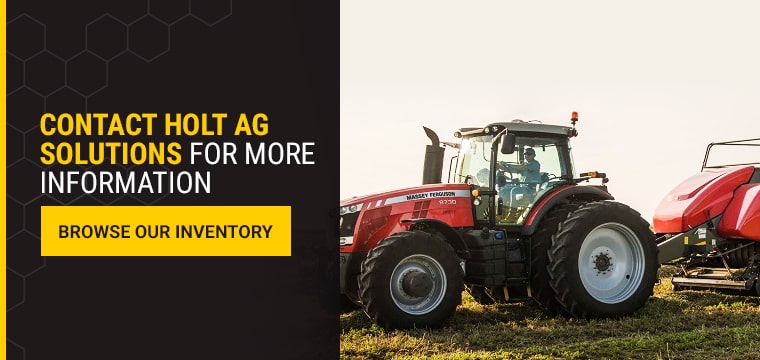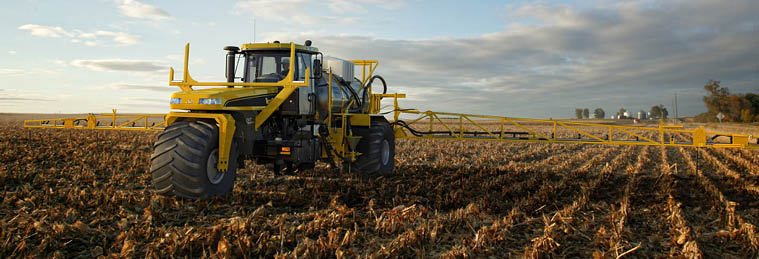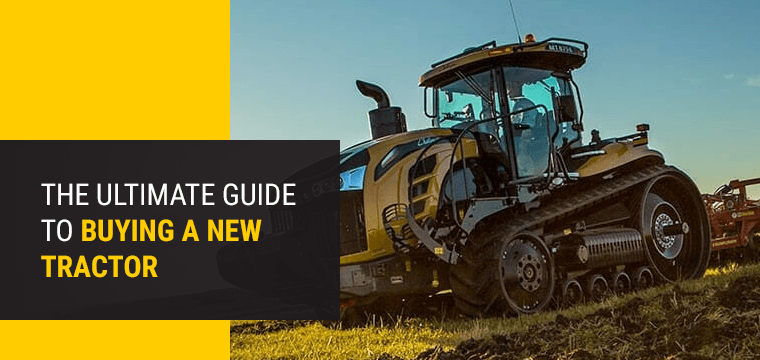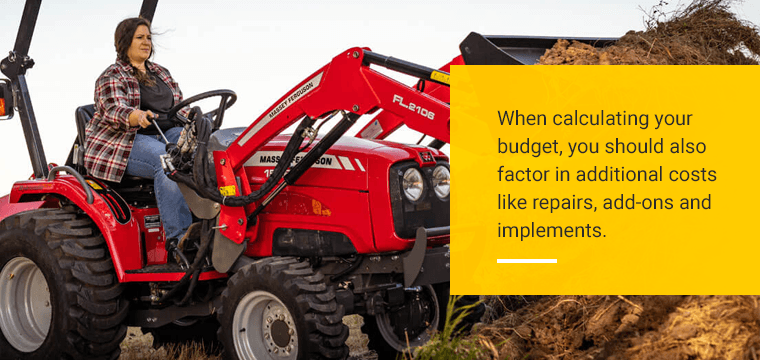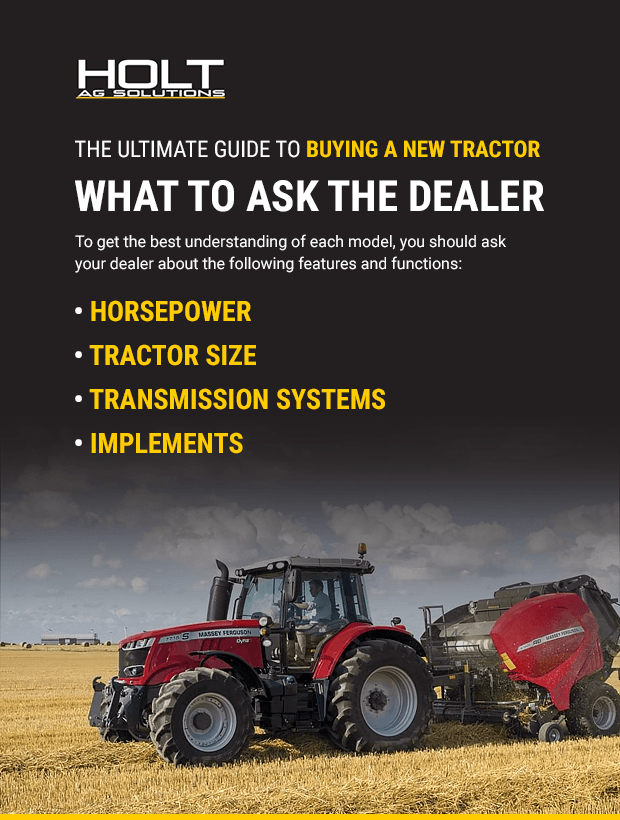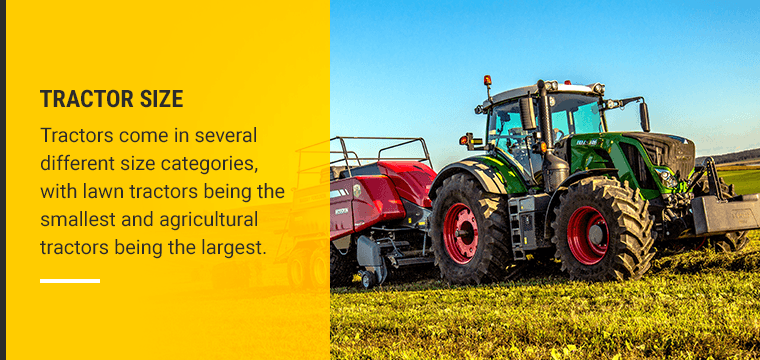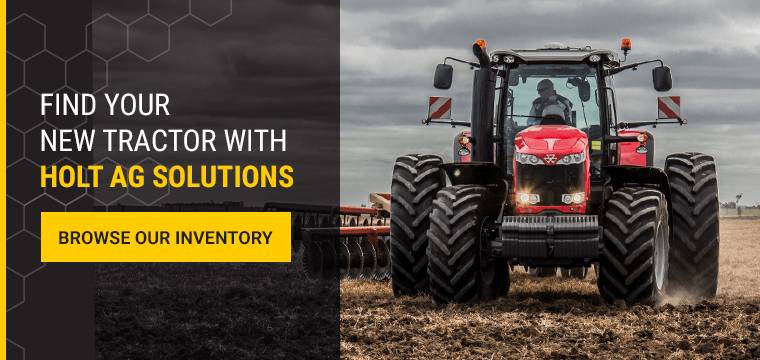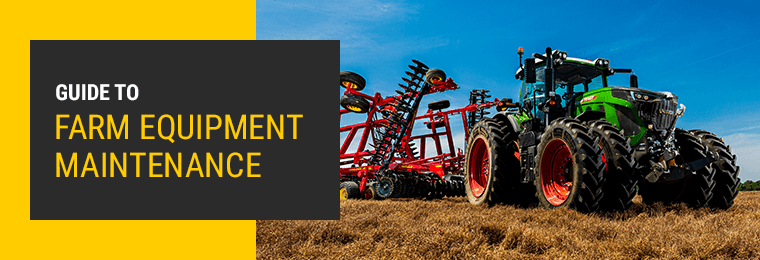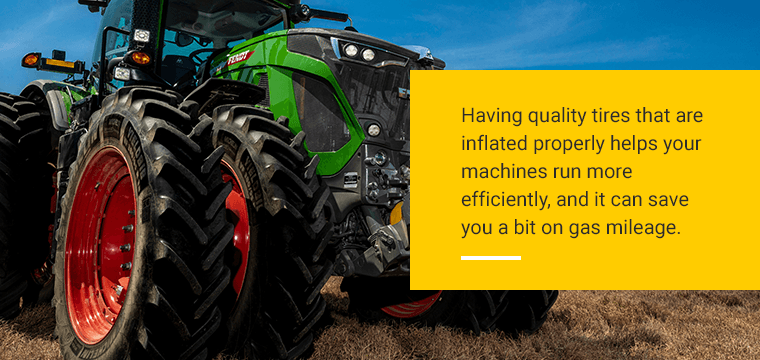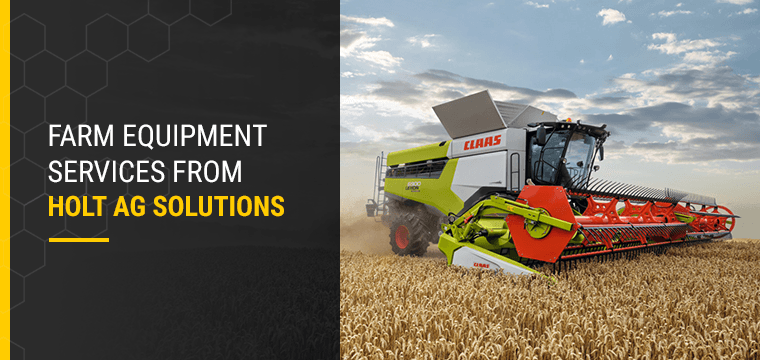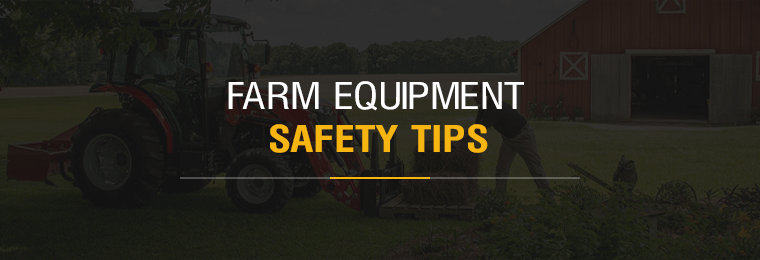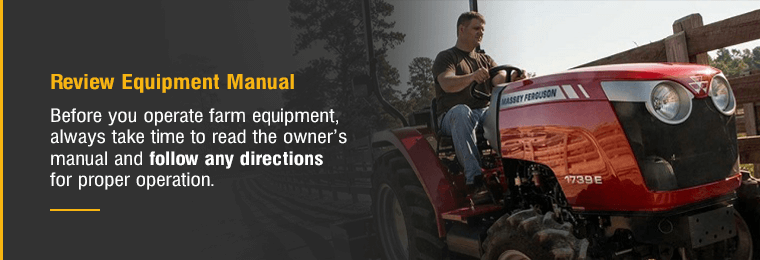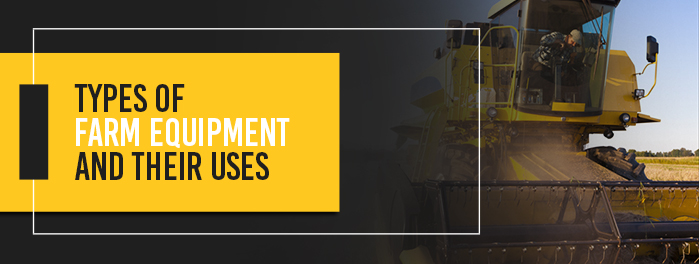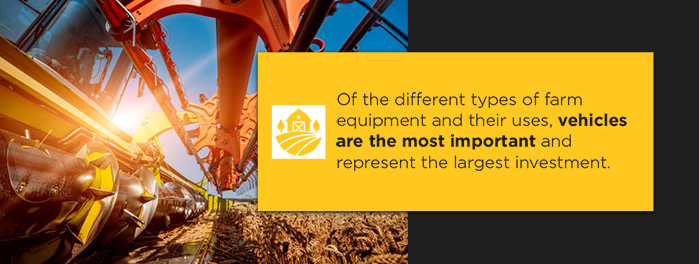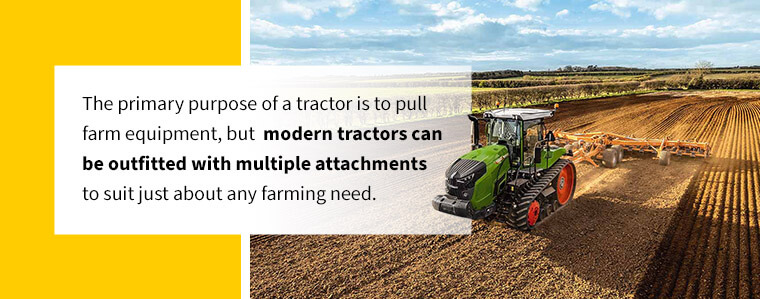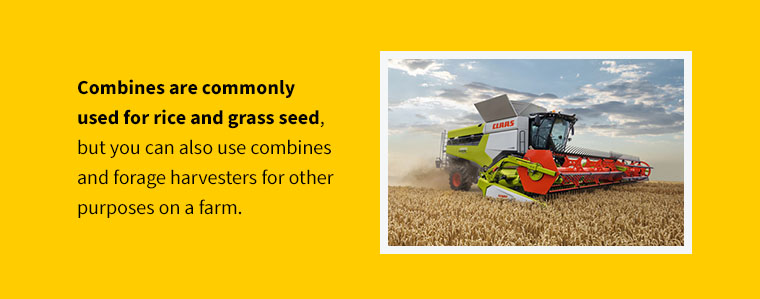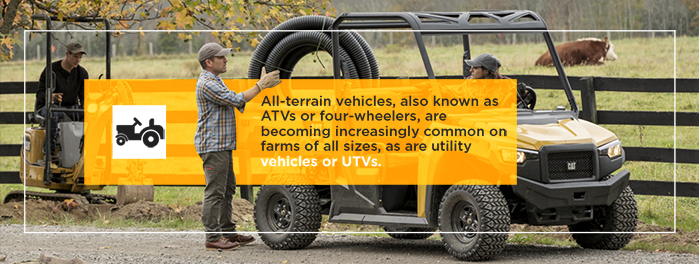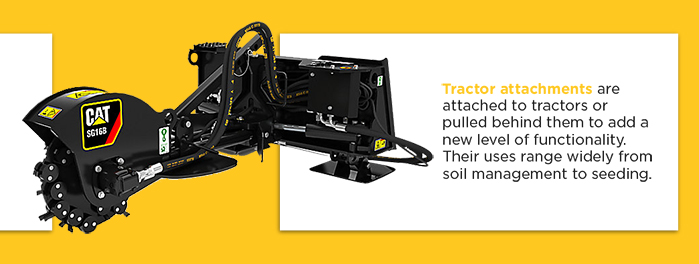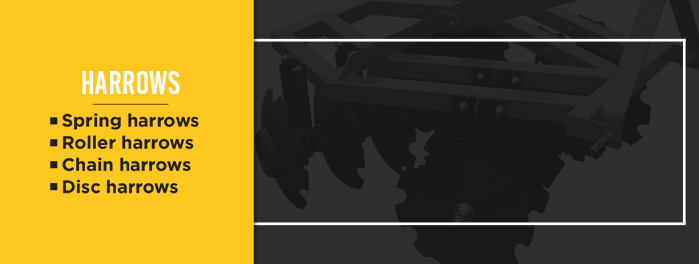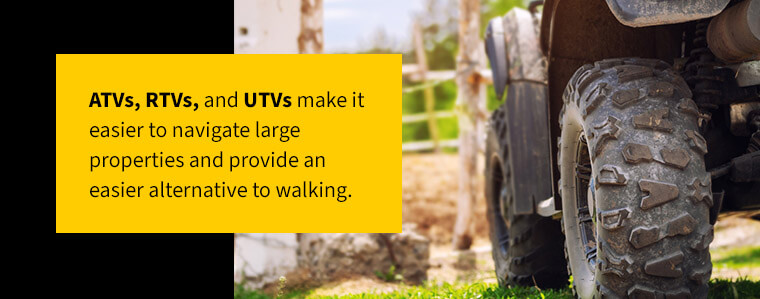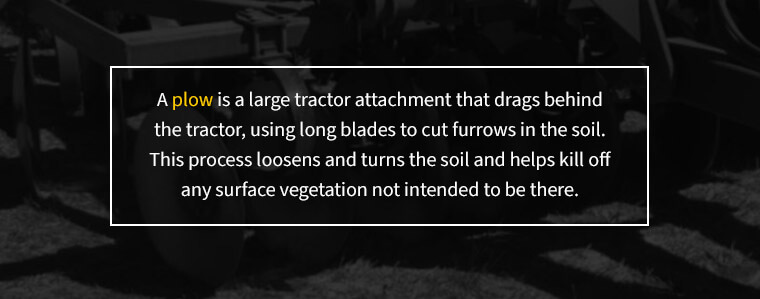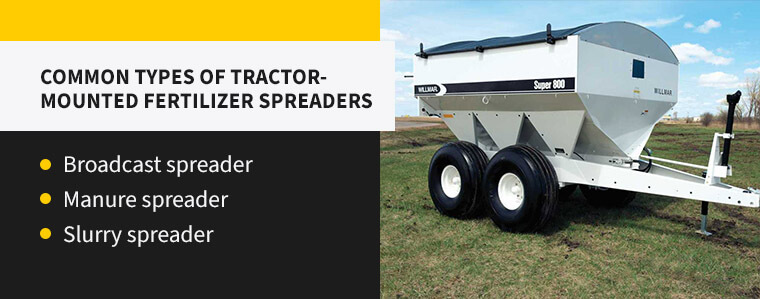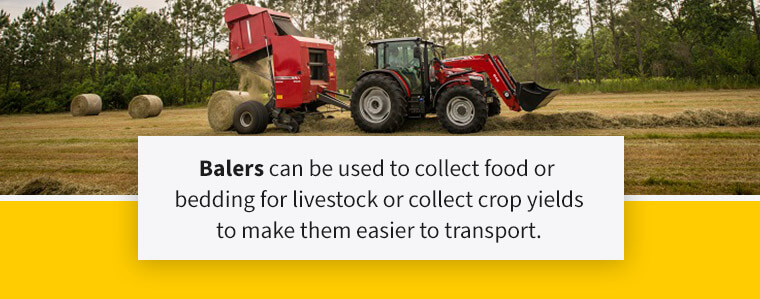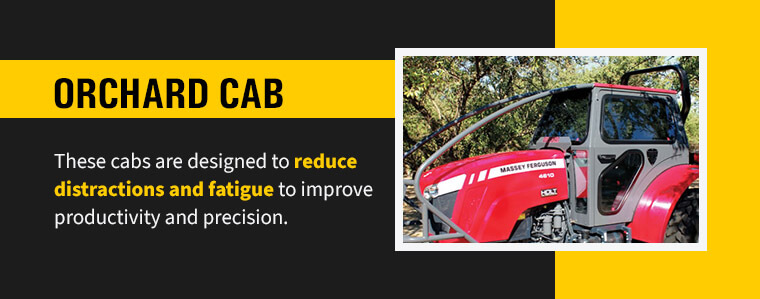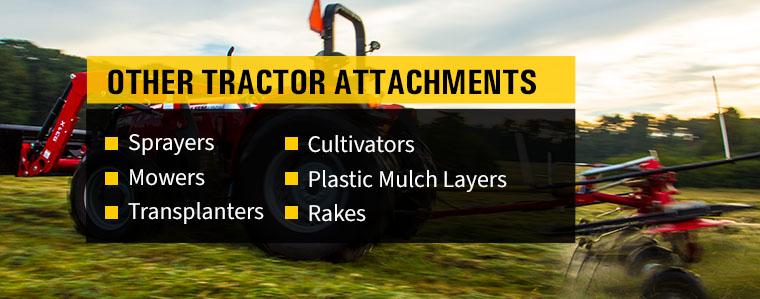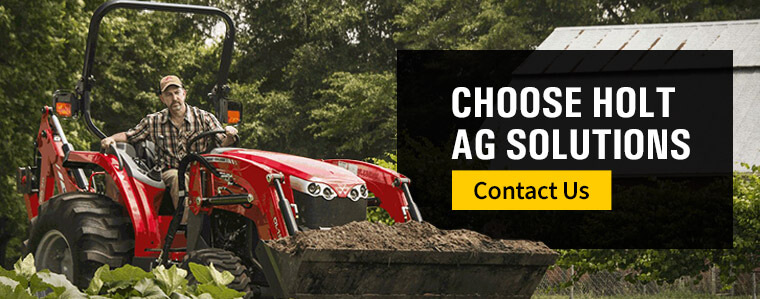What Are the Different Types of Tractors?
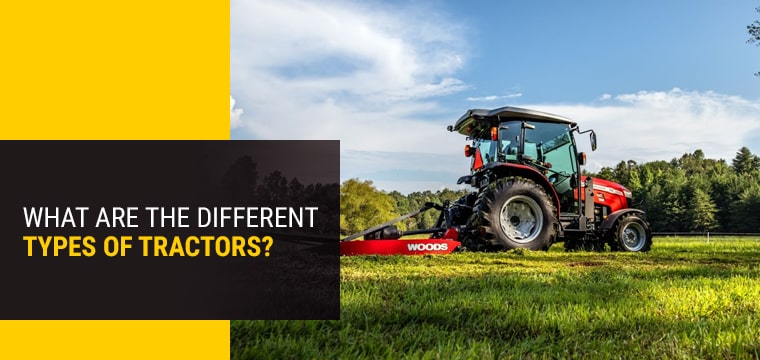
Quick Navigation
- Different Types of Tractors
- 1. Lawn Tractors
- 2. Compact Tractors
- 3. Sub-Compact Tractors
- 4. Utility Tractors
- 5. Agricultural Tractors
- 6. Additional Tractor Types
- Considerations Before Making a Purchase
- 1. Tractor Size
- 2. Budget
- 3. Important Attributes of Farm Tractors
- Browse New Tractors at Holt Ag Solutions
- 1. Compact and Subcompact Tractors
- 2. High-Horsepower Front-Wheel-Assist Tractors
- 3. Track Tractors
When most people think of a farm, they likely picture smaller family-owned farms instead of large agricultural corporations. Though smaller farms with an annual gross cash farm income of less than $350,000 account for88% of all farms in the United States and a little less than half of the total farmland, they only produce 19% of the value of all agricultural products sold. Despite the significant effect that large agricultural corporations have on the food production system and economy of the United States, small farms still have a valuable impact on the system.
Whether you are a small farming operation, mid-sized field-based business or a large agricultural business, your contribution to the farm and agriculture industry is a necessity to keep the industry running smoothly and able to produce enough to meet the country’s needs. To ensure your business operates at its full potential and capacity, you want the best equipment for the job. A new piece of machinery can improve your workflow and help you keep up with advancements in the industry. One essential piece of equipment that can keep any farm at the top of its production is the right tractor.
Different Types of Tractors
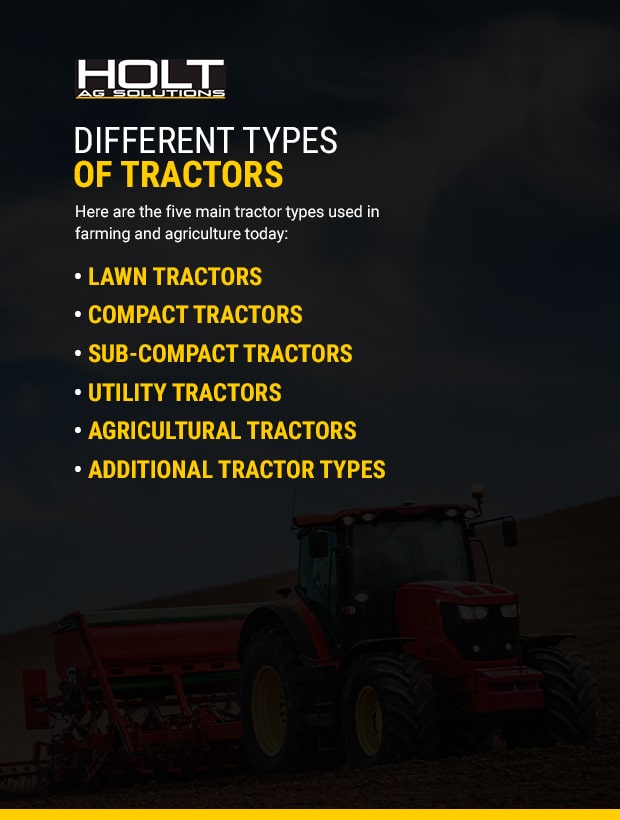
While each tractor has various functions and capabilities depending on its make and intended use, there are five fundamental tractor models on the market today. Each model type's sub-models boast different standout features, but each of the following five models has defining features and capabilities that set it apart from the others. Here are the five main tractor types used in farming and agriculture today.
1. Lawn Tractors
As suggested by the name, lawn tractors are excellent for lawn and garden work. Lawn tractors are most suitable for residential use such as simple grass cutting and lawn care. Despite their focus being on lawn mowing, lawn tractors have other notable features, too. Some of the additional capabilities of lawn tractors with the use of specialized attachments include tilling, hauling material, and plowing snow.
2. Compact Tractors
A good option for large agriculture operations, compact tractors are small farming tractors with defining features such as a weight of 4,000 pounds or less, between 40 and 60 horsepower, and having a three-point hitch. The ideal compact tractor can lift over 2,000 pounds with a loader, which can range from a front loader to a backhoe. Some compact tractors have four-wheel drive and a cab, making them a great option if you need an adaptable tractor with various uses in different weather conditions and terrains.
3. Sub-Compact Tractors
Sub-compact tractors are smaller than compact tractors with an approximate average of 20 to 25 horsepower. These tractors typically boast two- to three-cylinder diesel engines with three-point hitches and a substantial lift capacity. This type of tractor is capable of both mid-sized yard work and agricultural production jobs, with the best sub-compact tractors built for various purposes and with features including bucket attachments and underneath mowers or pull-behind rotary mowers.
4. Utility Tractors
Utility tractors are very similar to compact tractors and have a lot of cross-over features, and many manufacturers make compact utility hybrid tractors that combine features of the two types. Basic utility tractors have an average of between 40 and 100 horsepower, sometimes exceeding that. Most utility models have a four-cylinder diesel engine with multiple electronic features and, occasionally on newer models, artificial intelligence systems.
5. Agricultural Tractors
Agricultural or row crop tractors can perform various tasks on a large scale, with specifically notable features relating to growing and cultivating crops. User-friendly and comfortable, agricultural tractors are a good option for large-scale farming operations that need a machine with multiple capabilities. Advantages of these tractors include good row-spacing features, easy attachment and detachment of implements and advanced heavy-lifting performance.
6. Additional Tractor Types
Although there are five main tractor types, some tractor models do not strictly fall under one of these categories, as they have combined capabilities with various attachments and additions. Some additional popular tractor types include orchard tractors, industrial tractors, garden tractors, rotary tillers and earth-moving tillers.
Different people characterize tractors differently, making tractor classification fairly loose. The principal components used to decide what classification a tractor falls under is the type of work it performs and whether it has wheels or tracks.
Considerations Before Making a Purchase
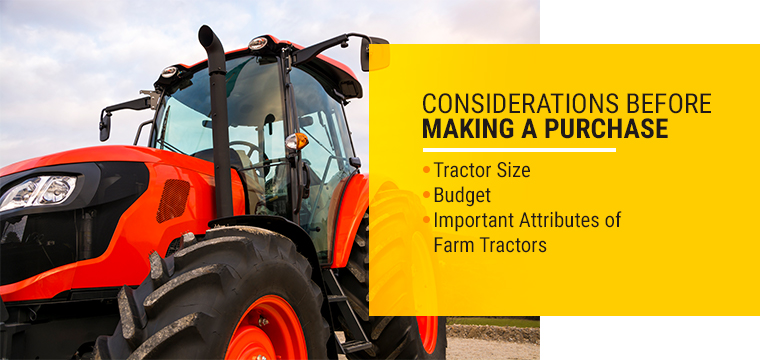
Even if you may know the essentials you want when purchasing a tractor, it is crucial to look at all your options and know what will benefit you the most. Some considerations to make when debating what may work best for you include your work site's size, your budget and functions you need your tractor to perform.
Tractor Size
When thinking about tractor size, you need to invest in one that aligns with the size of your land. If you have a lot of land with rough terrain, you may want to look at tractors with higher horsepower than if you have a smaller farm that only requires basic tasks.
Budget
Though a tractor can help maintain or even increase your workload, thus increasing your productivity and income, do not rely on this idea when considering your budget. Define your budget by what you or your company can currently afford and stay within that range.
Important Attributes of Farm Tractors
While there are many details about a tractor to look at before making a purchase, three critical attributes are hydraulics, lift capacity and transmission.
- First, consider the tractor's hydraulic system, which allows the machine to move and perform its functions.
- Then, look at the tractor's lift capacity. The work you will use it for can alter the lift capacity you need. Choose one that is appropriate and proportionate to the work you do.
- There are two transmission types — hydrostatic and mechanical. Mechanical transmissions are more energy-efficient and economical than hydrostatic transmissions, but they do not have as high of a range of engine or ground speed.
Browse New Tractors at Holt Ag Solutions
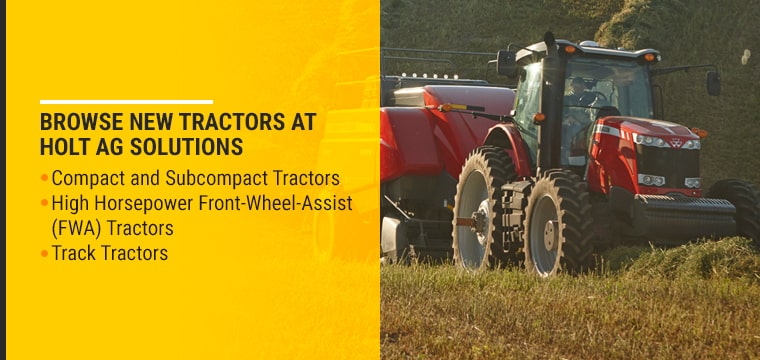
Now that you have a basic understanding of the different types of tractors and what work you can use them for, think about your agriculture business and in what aspects may benefit most from new equipment. Consider the various attributes available and decide what will best improve the productivity and efficiency of your agricultural work. Get started by checking out the wide range of new tractors available at Holt Ag Solutions.
Compact and Subcompact Tractors
If you have decided that a compact or subcompact tractor is the right fit for you, we have various options to choose from. Each of our tractor models comes equipped with distinct features and attachments that can assist with a range of jobs from mowing and snow blowing to tilling and landscaping. We carry lines of new Massey Ferguson compact tractors and Kubota compact tractors.
At Holt Ag Solutions, we offer all sub-compact and compact Massey Ferguson tractors, ranging from the 1500 Series and GC1700 Series up to the 2800 Series. These tractors have powerful features in several different models, making it possible to increase your efficiency in mowing, loading, backhoe work, snow blowing and more with a subcompact tractor from these series.
Our collection of Kubota compact tractors includes the B Series, BX Series, L Series and LX Series. Kubota compact tractors combine power, adaptability and comfort to create versatile and efficient machines that are ideal for various applications, including landscaping, livestock maintenance, garden plot maintenance and hauling.
Some Kubota and Massey Ferguson compact tractors are exclusive to specific Holt Ag Solutions locations, so reach out to us to find out where you can find specific models. We also offer used Kubota and Massey Ferguson models — be sure to check our listings to make an offer.
High-Horsepower Front-Wheel-Assist Tractors
Commercial agriculture sites demand hard work, so you need to have reliable farm equipment that can efficiently, quickly keep up with your workload. If you rely on your tractor for heavy-duty jobs in wide areas or rough terrains, the amount of horsepower your tractor runs is a crucial consideration. At Holt Ag Solutions, we have an array of high-horsepower FWA tractors from both Massey Ferguson and Fendt, two dependable and beneficial brands.
From Massey Ferguson, we carry the 7700 Series and the 8700 Series. Our stock of the 7700 Series includes small- and large-frame models with various horsepower, transmissions and rear lift capacities. With the engine, transmission, frame, axles, steering, PTO and hydraulics all engineered to work synchronically, any model from this series will help you maximize efficiency and productivity in any farm task from planting and harvesting to lugging and baling.
Created as an improvement on previous models, Massey Ferguson’s 8700 Series boasts numerous performance features, dynamic versatility and increased comfort. This tractor series has the power and versatility to assist in any agricultural setting, including hayfields, cornfields, row crops, dairy operations and more.
Other high-horsepower tractors we have available are various Fendt options, including the Fendt 500, 700, 800, 900 and 1000 Vario high-horsepower tractor series. Aside from receiving a reliable and efficient tractor from Fendt, when you purchase a Fendt tractor through Holt Ag Solutions, you also receive the support services of the Fendt Gold Star Customer Care plan, meaning that Holt Ag Solutions will assist with all regular and requested maintenance and servicing.
With the integration of some of the most innovative tractor features, the Fendt 500 Vario Series has tractors with up to 165 horsepower with smooth and quiet four-cylinder engines that make their operation simple with high-performance capabilities. The 700 Series tractors specialize in a multitude of field settings, such as grassland work and heavy-duty field and fleet operations, through their maximum of 246 horsepower engine, precision steering capabilities and power-lift applications.
With an array of capabilities other tractors cannot provide, the Fendt 900 Series has tractors with up to 415 horsepower with a controlled all-wheel clutch. They also have additional attractive features, including a bonnet camera, an improved locking system, a premium sound system and a pull-out toolbox with three different equipment options.
As for the 1000 Series, this tractor is right for you if you are looking for a high-performance standard tractor with large tires, four-wheel drive and great maneuverability. Manufactured for long-lasting power, this series takes Fendt’s Vario tractors to the next level, including features such as optimal reverse drive control and precision farming tools.
Track Tractors
In addition to new compact tractors and high-horsepower tractors, at Holt Ag Solutions, we also sell track tractors. If you are looking for a tractor capable of performing on rugged terrain and completing rigorous applications, a track tractor may be the right comprehensive piece of equipment for you. We offer product lines from Fendt and Challenger, both with innovative designs to improve work efficiency and reduce long-term operating expenses.
The two series options from Fendt that we carry are the 900 Vario MT Series and the 1100 Vario MT Series. The 900 MT Series features the introduction of a new type of track tractor designed with both comfort and performance in mind. This series has an easy-to-use display screen built for multitasking and minimizing downtime while still boasting reliable engine systems for maximum performance and optimal oil efficiency. Similarly, the 1100 MT Series is a new track-type tractor but with higher power and more diesel tank capacity. Built to enhance the operator’s experience, the cab has various comfort and convenience features, in addition to its smooth ground control and award-winning transmission innovation.
The two product lines of track tractors we have from Challenger are the MT700 Series and the MT800E Series. Built on Challenger’s AccuEngineering™ platform, the MT700 Series has technologically advanced features to help deliver powerful performance while still considering the operator’s comfort through everything from heavy-duty shock absorbers to Bluetooth technology and USB smart-charge ports. The MT800E Series presents an agriculture tool with unmatched torque and an industry-leading undercarriage system. With high-horsepower engines and powershift transmissions in addition to their comfort and ease of use, these tractors are perfect for long days working a large agriculture operation.
Contact Holt Ag Solutions for More Information
At Holt Ag Solutions, we take pride in helping you find the best equipment for your farm and dedicating our time to helping your agriculture-based business succeed. In addition to finding the right tractor for you, we also offer an extensive selection of attachments and implements to enhance your equipment's efficiency even further.
Choose confidently with Holt Ag Solutions. Aside from providing you with high-quality new and used farming equipment, we also offer custom flexible financing options, parts and servicing for your machinery— regardless of its brand — and assistance from knowledgeable staff.
If you have any questions or concerns, visit your nearest Holt Ag Solutions location in Northern California or Oregon or contact a representative online so we can help you find the right equipment for you!


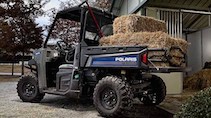 Farm Tax Exemption Form
Farm Tax Exemption Form
